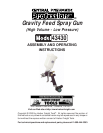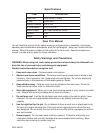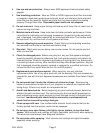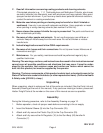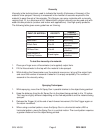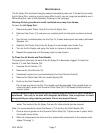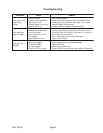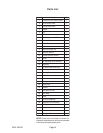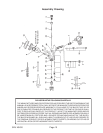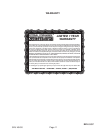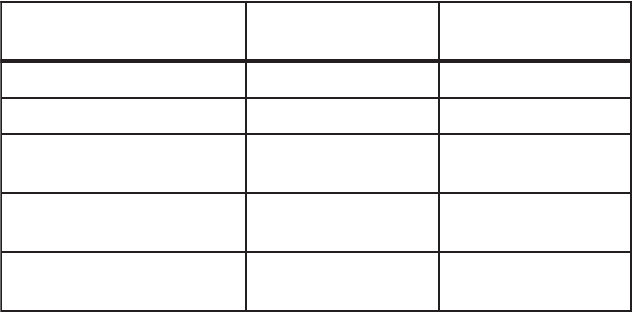
Page 6SKU 43430
Viscosity
Viscosity is the technical term used to indicate the liquidity (thickness or thinness) of the
material to be sprayed. Viscosity is measured in the number of seconds required for the
material to pass through a Viscosimeter. This Sprayer can spray materials with a viscosity
ranging from 10, to a maximum of 60. Material with a higher viscosity can be used only with
water-soluble products (outdoor and indoor wall applications). Use high quality products.
The following table gives some guidelines on thinning.
LAIRETAMROTNIAPYTISOCSIV
GNINNIHT
STNEMERIUQER
relliF02ot01gninnihtoN
niatSdooW52ot51gninnihtoN
tniaPkcaP-253ot0
2
rerutcafunameeS
senilediug
tniaPesaBliO04ot53
rerutcafunameeS
senilediug
roelbulos-retaW
stcudorPgnihsiniF
r
ehgihdna04
rerutcafunameeS
senilediug
To test the viscosity of a material:
1. Place your finger over a Viscosimeter (not supplied) output hole.
2. Fill the Viscosimeter to the top with the material to be sprayed.
3. While holding the Viscosimeter over the material source can, let go of the output hole
and count the number of seconds it takes for it to empty completely. The number of
seconds is the viscosity rating.
Spraying Techniques
1. While spraying, move the Air Spray Gun in parallel strokes to the object being painted.
2. Keep the distance from the Air Spray Gun to the object being painted to 4 to 12 inches.
This may be slightly different depending on the flow adjustment and the material being
sprayed.
3. Release the Trigger (4) at the end of each forward movement; Pull the Trigger again on
the return movement.
4. When using a vertical pattern, move the Spray Gun in a horizontal motion; With a
horizontal pattern, move the Spray Gun in a vertical motion. The round pattern requires
a greater distance from the object being painted.
REV 08/02



